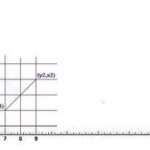SOLVING VARIATION PROBLEMS
DIRECT VARIATION
It is a special function which can be expressed as the equation y = kx where k is a constant. The equation y = kx is read “y varies directly as x” or “y is proportional to x. The constant k is called the the constant of variation or constant of proportionality.
Illustration Number One :
The circumference ( C ) of a circle varies directly as the diameter ( d ). The direct variation is written as C = ∏ d . The constant of variation is ∏ .
Illustration Number Two :
A teacher makes $10 per hour. The total wage of the teacher is directly proportional to the number of hours (h ) worked. The equation of variation is W = 10h. The constant of proportionality is 10.
A direct variation equation can also be written in the form y = kx^n, where n is a positive number. For example the equation y = kx^2 is read ” y varies directly as the square of x..
Illustration Number Three :
The area ( A ) of a circle varies directly as the square of a radius ( r ) of the circle.
The direct variation equation is A = ∏ r ^2. The constant of variation is ∏.
Sample Problem Number One :
Given that V varies directly as r and that V = 50 when r = 5 , find the constant of
Variation and the equation of variation.
First, write the basic direct variation equation: V = kr
Then, replace V and r by the given values : 50 = k * 5
Solve for k : (1/5) 50 = 5k (1/5 ==è k = 10
Write the direct variation equation by substituting the values of k into the basic direct
variation equation: V = 10r
Sample Problem Number Two :
The tension ( T ) in a spring varies directly as the distance ( x ) it is stretched.
If T = 20 lbs. when x = 5 inches. Find T when x = 10 inches.
Write the basic direct variation equation : T = kx
Replace T and x by the given value then solve for k :
20 = 5 * k =è (1/5) 20 = 5k ( 1/5) ===è k = 4
Write the direct variation equation by substituting the value of k into the basic direct
Variation equation : T = 4x
To find T when x = 10 inches. Substitute 10 for x in the equation to solve for T.
T = 4 (10) = 40 lbs.
INVERSE VARIATION
It is a function which can be expressed as the equation y = k/x where k is a constant. The equation y = k/x is read ” y varies inversely as x” or “y is inversely proportional to x .” In general, an inverse variation equation can be written y = k/x^n
where n is a positive number .
Illustration Number Four :
The equation y = k/x^2 is read “y varies inversely as the square of x.”
Given that P varies inversely as the square of x and that P = 10 when x = 2,
Find the variation constant and the equation of variation :.
Set the inverse variation equation : P = k/x^2
Substitute the given values to corresponding variables in the equation and solve for k :
10 = k/2^2 ==è ( 4 ) 10 = k/4 (4) =è k = 40
The constant of variation is 40. The inverse variation equation is P = 40/x^2
Sample Problem Number Three :
The length ( L ) of a rectangle with fixed area is inversely proportional to the width.
If L = 10 W = 4, find the length when w = 7.
Write inverse variation equation : L = k/W
Substitute the given values to the equation and solve for k :
10 = k/4 =è k = 40
L = 40/7 or L = 5 and 5/7
JOINT VARIATION
It is a variation wherein a variable varies directly as the product of two or more
other variables. A joint variation can be expressed as the equation Z = kXY, where
K is a constant . The equation is read as “Z varies jointly as X and Y.
Illustration Number Five :
The area ( A ) of a triangle varies jointly as the base and the height. The joint variation equation is written as A = ½ bh. The constant of variation is ½.
COMBINED VARIATION
It is a variation wherein two or more types of variation occurs at the same time.
For example in Physics, the volume ( V ) of a gas varies directly as the temperature
( T ) and inversely as the pressure ( P ). The combind variation equation is written as
V = k T/ P
Sample Problem Number Four :
The pressure P of a gas varies directly as the temperature T and inversely as the volume ( V ). When T = 50 degrees and V = 200 in ^3 P = 30lb/in. Find the pressure of a gas when T = 70 degrees and V = 300 in^3.
Write first the basic combined variation equation : P = kT/V
Replace the variables by the given values then solve for k :
30 = k (50)/ 200
30 * 200 = 50*k
(1/50) 6000 = 50 k (1/50)
k = 6000/50 = 120
P = 120 T/V =è P = 120 (70)/300
(1/300) 300 P = 8400 (1/300)
P = 8400/300 = 28 lb/ in.
SOURCE : INTERMEDIATE ALGEBRA
AN APPLIED APPROACH By Aufmann/Barker


